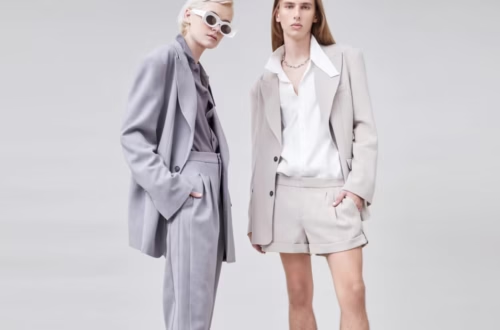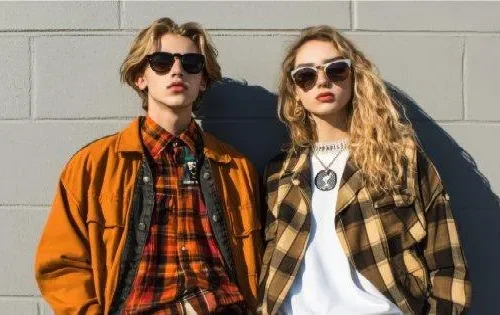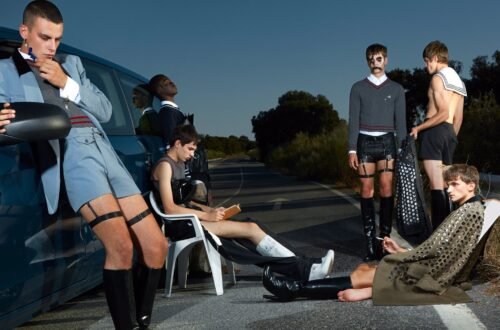Walk into a clothing store, and you’re hit with a divide: men’s section on one side, women’s on the other. But why? Fashion and gender have been intertwined for centuries, shaping how we express identity, challenge norms, or conform to expectations. Today, as gender fluidity and inclusivity reshape culture, fashion is both a mirror and a catalyst for change. This 2,500-word article explores how fashion and gender correlate, tracing their historical roots, modern shifts, and what it means for self-expression. Let’s dive into the threads that connect clothing to identity.
The Historical Dance of Fashion and Gender
Fashion has always reflected society’s gender norms, from medieval tunics to Victorian corsets. Clothing signaled status, role, and gender, often enforcing rigid boundaries. Understanding this history reveals how deeply fashion and gender are linked.
Early Gendered Fashion
In ancient societies, clothing was often unisex—think Roman togas or Egyptian kilts. By the Middle Ages, European fashion began splitting along gender lines, with men in breeches and women in gowns. These styles reinforced societal roles, limiting women’s mobility while men’s clothing allowed freedom.
Renaissance and Beyond
By the Renaissance, sumptuary laws dictated who could wear what, tying fashion to gender and class. Women’s elaborate dresses symbolized domesticity, while men’s tailored suits projected power. These norms persisted, shaping perceptions for centuries.
The 19th Century Divide
Victorian-era fashion cemented gender roles. Women wore corsets and petticoats, emphasizing fragility, while men’s suits became symbols of authority. The Industrial Revolution mass-produced clothing, making gendered styles more accessible and entrenched.
The 20th Century Shift
The 20th century brought challenges to gendered fashion. Women’s suffrage and World War II blurred lines—think Rosie the Riveter in pants. By the 1960s, unisex trends like bell-bottoms and miniskirts questioned traditional norms.
Fashion as Gender Expression
Fashion is a canvas for identity, letting people affirm or defy gender expectations. Today, 73% of Gen Z believe clothing shouldn’t be gendered, per a 2023 YouGov poll. This shift is reshaping how we view style and self.
Reinforcing Gender Norms
Historically, fashion reinforced binary roles. Pink for girls, blue for boys—color coding started in the 1940s. Women’s clothing often emphasizes curves, while men’s focuses on structure, subtly upholding stereotypes.
Cultural Expectations
In many cultures, clothing signals gender roles. In South Asia, saris are feminine, while kurtas are unisex but styled differently by gender. These norms guide social acceptance but can stifle individuality.
Challenging Gender Norms
Fashion rebels against rigidity. The 1980s saw men like Prince in heels and lace, while women like Annie Lennox rocked suits. Today, designers like Harris Reed create genderless collections, blending skirts and suits for all.
Gender-Neutral Fashion
Brands like ASOS and Zara now offer gender-neutral lines. These collections—think oversized tees or tailored jackets—prioritize comfort and versatility, appealing to 41% of millennials who prefer non-binary clothing, per a 2024 Statista survey.
Fashion and Gender Fluidity
Gender-fluid fashion is booming. Celebrities like Harry Styles, who wore a dress on Vogue’s 2020 cover, normalize fluidity. Designers like Telfar create “for everyone” bags, erasing gender boundaries.
Table: Evolution of Gendered Fashion
| Era | Men’s Fashion | Women’s Fashion | Gender Impact |
|---|---|---|---|
| Middle Ages | Breeches, tunics | Gowns, veils | Enforced rigid gender roles |
| Victorian Era | Suits, top hats | Corsets, petticoats | Emphasized binary differences |
| 1920s–1960s | Suits, jeans | Flapper dresses, miniskirts | Began challenging norms |
| 21st Century | Gender-neutral, suits, streetwear | Dresses, suits, genderless styles | Embraces fluidity and inclusivity |
Comparing Gendered vs. Gender-Neutral Fashion
Gendered fashion, rooted in tradition, offers structure but limits expression. Gender-neutral fashion prioritizes individuality, with brands like Uniqlo offering minimalist, unisex designs. While gendered clothing sales still dominate (65% of global apparel sales in 2024), gender-neutral lines are growing 20% annually, per McKinsey.
Pros and Cons of Gendered Fashion
Pros:
- Cultural Familiarity: Aligns with traditional expectations, easing social acceptance.
- Targeted Design: Tailored to body types, enhancing fit for some.
- Historical Significance: Reflects cultural heritage, like kilts or kimonos.
Cons:
- Restrictive Norms: Limits self-expression, especially for non-binary individuals.
- Stereotyping: Reinforces outdated gender roles, like skirts equaling femininity.
- Exclusionary: Alienates those outside binary categories.
Pros and Cons of Gender-Neutral Fashion
Pros:
- Inclusivity: Welcomes all gender identities, fostering self-expression.
- Versatility: Designs like oversized shirts suit diverse body types.
- Cultural Shift: Challenges stereotypes, promoting equality.
Cons:
- Limited Availability: Only 15% of major brands offer gender-neutral lines.
- Fit Challenges: May not suit all body shapes perfectly.
- Resistance: Faces pushback from traditionalists.
People Also Ask (PAA)
How does fashion influence gender identity?
Fashion shapes how individuals express or explore their gender, from conforming to norms with dresses to defying them with unisex styles.
Where can I find gender-neutral clothing?
Brands like Telfar, ASOS, and Uniqlo offer gender-neutral collections. Check www.asos.com or www.uniqlo.com for options.
Why is gender-neutral fashion growing?
Shifting cultural attitudes and demand for inclusivity drive growth. Gen Z’s preference for fluidity fuels a 20% annual increase in sales.
How do cultural norms affect fashion and gender?
Cultural norms dictate gendered clothing, like saris for women in India, but globalization and activism are breaking these barriers.
Personal Story: Breaking the Mold
Growing up, I dreaded shopping for clothes. The women’s section felt like a trap of frills and tight fits, while the men’s offered freedom I craved. One day, I bought a loose men’s blazer and felt unstoppable. That choice wasn’t just style—it was claiming my identity. It taught me fashion isn’t about rules; it’s about who you are.
How to Explore Fashion and Gender
Informational Resources
- What is Gendered Fashion? Learn about its history on sites like www.fashionhistory.fitnyc.edu.
- Gender-Neutral Trends: Blogs like The Cut (www.thecut.com) cover evolving styles.
Navigational Tools
- Where to Shop: Platforms like Gender Free World (www.genderfreeworld.com) list inclusive brands.
- Designer Spotlights: Follow gender-fluid designers like Harris Reed on Instagram for inspiration.
Transactional Support
- Best Tools for Style: Apps like Cladwell help curate gender-neutral wardrobes. Shop sustainably at www.patagonia.com.
- Custom Clothing: Brands like Bindle & Keep offer bespoke, gender-inclusive tailoring.
FAQ Section
How does fashion reflect gender roles?
Fashion historically reinforced roles—suits for men, dresses for women—but today’s trends challenge these norms with unisex designs.
Why do some reject gendered fashion?
Many reject it for limiting self-expression and enforcing stereotypes, preferring styles that reflect their true identity.
Can fashion influence gender equality?
Yes, by normalizing gender-neutral clothing, fashion promotes inclusivity and challenges binary norms, fostering equality.
Where can I learn about gender-fluid fashion?
Check resources like www.vogue.com or The International Fashion and Gender Studies Network for insights.
What brands lead in gender-neutral fashion?
Telfar, ASOS, and Uniqlo are pioneers, offering versatile, inclusive designs for all identities.
A Call to Action
Fashion and gender are intertwined, but the rules are unwritten. Whether you rock a dress, a suit, or something in between, your style is your voice. Explore gender-neutral brands, support designers breaking barriers, and wear what feels true. Visit www.responsiblefashion.com for sustainable, inclusive options. Let’s make fashion a space where everyone belongs.





